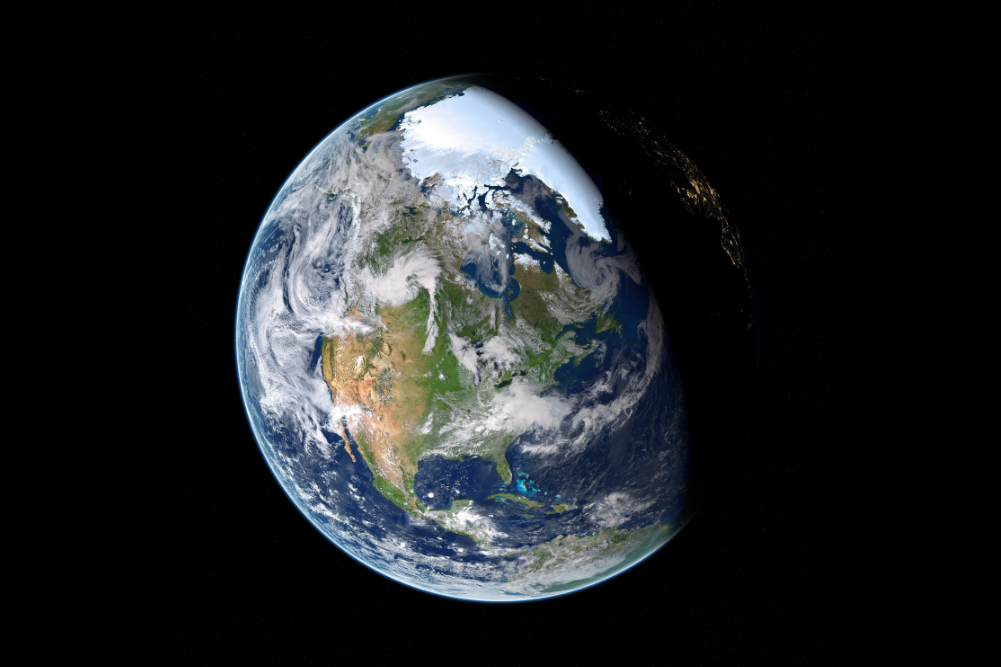Your guide to sustainable seafood choices
Over the past few years, fish and other seafood products have moved to the forefront of healthy eating recommendations. As protein foods they have the benefit of being high in omega-3 essential fatty acids and low in saturated fat. The UN’s Food and Agriculture Organization (FAO) estimates that seafood represents 16 per cent of the world’s animal protein intake, with fisheries employing around 35 million people either full or part time.
According to public perception, the environmental impacts of harvesting seafood are benign in comparison with those of land-based feedlots and factory farms. Sadly, this isn’t necessarily the case. In addition to the waste and pollution created, unsustainable harvesting is leading to the endangerment of some fish species. Awareness of this issue has grown recently, aided by certification schemes and shopping guides that enable consumers to take a proactive ethical stance.
Mining the seas
Over-fishing occurs whenever harvesting exceeds the reproduction rate. It is very much a global problem, with many fish stocks depleted and some severely over-fished. In 2003, Nature magazine sent out an alert that 90 per cent of the world’s large predatory fish (for example, swordfish, blue marlin and tuna) had been wiped out by industrial fishing practices. Species such as the southern bluefin tuna and Patagonian toothfish are threatened with extinction in the wild, and the World Wildlife Fund (WWF) is urging stronger government action to shift the entire industry onto a better sustainable footing.
As fishing technology such as underwater sonar has evolved and the scale of operations has increased, fishing vessels have ventured into deeper water for the first time. Here, repeated trawling (also known as dredging) leaves the ocean bed largely empty of life. Another fishing method involves kilometres of “longlines” buoyed near the surface, whereby thousands of hooks also snare an estimated 100,000 albatrosses per year. Probably the most sustainable of all is hook and line, but even it may have certain impacts.
Australia has the world’s third largest fishing zone, extending 200 nautical miles offshore in all directions. Illegal, unreported and unregulated (IUU) fishing covers a variety of violations and is a significant problem both here and in the waters off many other countries. Punitive measures are in place to discourage repeat offences, although surveillance over wide areas of ocean is obviously a challenge.
Caught in the net
An estimated one-third of the world’s total marine harvest is unwanted “bycatch”, which includes seabirds, marine mammals (such as seals and turtles) and, more rarely, dugongs, dolphins and whales. Sadly, most bycatch dies as a result and is returned, dead, to the sea.
The most notorious bycatch problem of dolphins being caught by tuna fisheries has been curtailed by widespread “dolphin safe” labelling and practices. Fortunately, a recent attempt by Mexico and other South American countries to water down this labelling in the US was unsuccessful, but some “dolphin safe” tuna may be associated with other types of bycatch.
According to environmentalists, dredging has the highest impact of any fishing technique. Deep-sea species are often particularly vulnerable to over-fishing; the heavy trawl nets trap a large quantity of bycatch, and corals and other fragile undersea habitats may be damaged.
Australian dredging targets fish, scallops, scampi and prawns and is practised most controversially around non-reef areas of the Great Barrier Reef. Department of Environment and Heritage figures show that around the far north of the Reef six to 10 tonnes of other species are discarded for every tonne of prawns harvested — largely for the export market. This is one of the world’s highest bycatch levels and an example of the inefficiencies found in the seafood industry. Meanwhile, Ningaloo — the largest reef in Western Australia — has no protection from over-fishing.
While supporting the creation of protected areas with marine parks, The Wilderness Society (TWS) believes that one negative consequence of these “no take” zones may be to concentrate trawling into a few scatterings of intense activity. Instead, TWS supports trapping for prawns like it is practised off the coasts of Canada and Hawaii.
There is some hope, though, in the form of bycatch reduction devices, which can achieve moderate bycatch reductions. Among these are specialised exclusion devices to prevent turtles from being unintentionally trapped.
Consumer impacts and solutions
The Japanese eat an unusually large quantity of seafood — the world’s highest when measured on a per-capita basis and islands with insignificant populations are excluded. Unfortunately, progress towards sustainable fishing practices is being held back in that country by a lack of interest in conservation.
Elsewhere, demand is threatening the Patagonian toothfish (also known as the Chilean sea bass), a species common on US menus that is facing commercial extinction as a result of its popularity. Several American marine groups encourage people to avoid it in favour of a less endangered option. More than half the world’s toothfish harvesting is illegal.
As part of its search for solutions to the endangered species problem, WWF teamed up with food multinational Unilever in 1997 to form the Marine Stewardship Council (MSC), a UK-based seafood accreditation organisation that became independent of both WWF and Unilever in 1999. Certification is given to individual fisheries on the basis of their adherence to the FAO’s Responsible Fisheries Code of Conduct, and a “chain of custody” is established to ensure that the certified product is separated from its non-certified equivalent throughout the supply chain. Certified products are permitted to use the MSC’s trademark fish logo.
Internationally, MSC endorsement has been obtained for Alaskan salmon, New Zealand hoki, South African hake and the western rock lobster off Western Australia. This lobster is currently the only Australian inclusion, although our Northern Prawn Fishery is aiming for MSC accreditation by 2006.
A pocket-sized guide
While the MSC’s international certification scheme is a positive move, the vast majority of seafood products on sale in Australia have no such eco-label, and until recently there was little scope to differentiate between the good, the bad and the ugly.
Things changed a few years ago when the Australian Marine Conservation Society (AMCS) produced the first national listings to aid in choosing sustainable seafood. Both the Sustainable Fish Finder and the Sustainable Seafood Pocket Guide can be downloaded from the AMCS website and the Pocket Guide is available via the group’s freecall number (see “Resources” below). Its research has yielded “positive” and “negative” lists (see the accompanying table).
| Better choices | Not recommended | Marketed as… | |
| barramundi (“barra”) | big-eye tuna (Indian Ocean) | tuna | |
| blue grenadier (hoki) | black teat fish (surf redfish) | a species of beche-de-mer | |
| blue mussel | blue warhou | trevally, sea bream | |
| blue-eye trevalla (blue-eye cod, big-eye, deep-sea trevalla) | brown tiger prawn | tiger prawn | |
| bream | eastern gemfish | hake, king couta, silver kingfish | |
| calamari (cuttlefish, octopus, squid) | orange roughy | deep-sea perch, sea perch | |
| coral trout | redfish | ||
| crabs | sandfish (sea cucumber) | a species of beche-de-mer | |
| flathead | school shark | flake, snapper shark, tope | |
| King George whiting (black whiting, South Australian whiting, spotted whiting) | silver trevally | silver bream, white trevally | |
| mackerel | southern bluefin tuna | tuna | |
| mullet | southern scallop | commercial, king or Tassie scallop | |
| oysters | tropical rock lobster | coral crayfish, painted cray | |
| pink ling (kingclip, rock ling, ling) | |||
| snapper (pink snapper, cockney, red bream, squire) | |||
| tailor (bluefin, skipjack) | |||
| whiting | |||
| yellowfin tuna |
Further questions and concerns
Beyond avoiding its list of non-recommended choices, the AMCS encourages people to ask seafood retailers three questions before buying a product:
- Is it a long-lived (more than 20 years) or slow-growing species?
- Is it a deep-sea species?
- Is it a shark or ray? (According to the AMCS, the fish in “fish and chips” is usually shark or ray. Both are in decline worldwide and several species are listed as being “threatened with extinction”.)
If the answer to any of these questions is “Yes”, the AMCS advises looking for an alternative.
More than 60 per cent of domestically consumed seafood is imported, and the AMCS encourages avoiding all imports unless they are MSC accredited. Overseas practices are frequently unregulated and many may be highly damaging towards the natural environment. Country-of-origin labelling is usually absent, but the low price of imports is nevertheless attractive to consumers. Perhaps the best option is to buy locally caught, as it supports the local economy and involves less “food miles” (the distance food travels to arrive on your plate).
Imported prawns (also known as shrimp) appear to be the worst offenders, and the AMCS draws attention to the destruction of coastal coral reefs and mangroves to create shrimp farms, especially in South-East Asia. It is believed that in some places the severity of the recent Asian tsunami was exacerbated after these coastal protective defences were removed to make way for shrimp aquaculture. Such farming tends to follow a “boom/bust” cycle of profit, followed by ecological collapse and relocation to another area.
Pollution from such enterprises has impacted on local fisheries, and local protests have been met with human rights abuses, violence and, in rare cases, murder. As prawns are an export industry, they offer few benefits to local residents.
Seagrass beds are found in the shallow coastal waters of every sea and ocean and are an important part of the marine ecosystem that also protects against tsunamis. Harvested seagrass is of dubious sustainability and it may find its way into Australia in the form of products such as doormats originating in Vietnam.
A particular difficulty caused by the lack of consumer labelling is an absence of species data. In the case of cod/groper, lobster, prawns (both farmed and wild) and scallops, some of the species are endangered. Sought-after tunas include bluefin, albacore and big-eye — all of which are listed as endangered by the International Union for the Conservation of Nature — and the more common skipjack and yellowfin, which are not.
Although not approved for sale as food, genetically engineered (GE) fish, including salmon and rainbow trout, have been raised in several countries, including the US and Canada. Progress with the development of “frankenfish” is slow and the trout have been found to have deformities not seen in regular trout. A Californian company called Aqua Bounty Farms is requesting approval from the US Food and Drug Administration (FDA) to market a farmed GE salmon that grows to a larger size than its conventionally bred equivalent.
Marine farming
A growing trend is the farming of saltwater species at the ocean’s edge in mariculture projects. The AMCS believes, for a variety of reasons, that this is a band-aid solution that circumvents the pressing problem of species depletion. Wild-caught fish are captured as breeding stock, and the use of fishmeal as feed is widespread. Depending on the species, between two and 12 kilos of fishmeal is required to produce one kilo of fish or prawn meat. Among the most inefficient is the southern bluefin tuna, which requires 12 times its own weight in feed.
High-stocking densities result in a tendency towards stress, and disease transmission between farmed and wild populations is a risk. There has been a history of cage escapes from aquaculture facilities, including some introduced species, which leads to a risk of feral populations becoming established. Pollution may spread from biological wastes, uneaten food and chemicals such as vaccines and antibiotics.
Non-native Atlantic salmon is one of the most common mariculture species, reared in sea cages off Tasmania and South Australia. Others include prawns, snapper, mulloway (jewfish), barramundi, yellow kingtail, oysters, rainbow trout (also marketed as “ocean trout” or “golden trout”), blue mussels and abalone.
Freshwater aquaculture has been widely adopted in developing countries as a source of protein and it appears to be a better environmental choice. Freshwater fish are accustomed to higher densities and because they tend to be vegetarian or omnivorous, fishmeal is less likely to be used as feed. Examples include carp, tilapia, catfish, crayfish and eels.
Government regulation
The Australian Fisheries Management Authority (AFMA) is entrusted with regulating fishing activities. With a legislative commitment to environmentally sustainable development (ESD), AFMA Chair Dr Wendy Craik has stated that its twin goals are sustainable fish stocks and a sustainable fishing industry. Are these potentially conflicting aims possible to reconcile?
Some of the AMCS non-recommended species are listed as “endangered” or “vulnerable” under the Federal Government’s Environmental Protection and Biodiversity Conservation Act, but others still lack such a classification. The eastern gemfish and orange roughy were nominated for inclusion in the Act, but their addition to the legislation was opposed by the AFMA. Perhaps this has something to do with the high-value export market that currently exists for orange roughy, which is mentioned on the AFMA’s website.
Protection from mercury pollution
In addition to sustainability issues, a further consideration for seafood consumers is methyl mercury and other chemical contaminants such as PCBs (polychlorinated biphenyls). The UN’s Environment Program says seafood is the primary source of human mercury intake.
Often originating from distant sources, once mercury enters the ecosystem it “bioaccumulates” in large fish high up in the food chain. Major human-created sources of the chemical include mercury-cell chlorine factories, coal-fired power plants and municipal and medical waste incinerators. Jason Lefkowitz of the marine lobby group Oceana has recently been raising awareness about the emissions from outdated technology still used in some chlorine plants.
Low-level mercury exposure is difficult to identify, but more marked symptoms may include trembling, numbness, memory loss, depression, headaches, irritability and an inability to think. The dangers are most marked for pregnant women, as mercury can damage the nervous system of the foetus; newborns are also vulnerable.
Food Standards Australia New Zealand (FSANZ) advises children, along with women who are pregnant, nursing or of childbearing age, to limit their intake of shark, broadbill, marlin and swordfish to one serve per fortnight, with no other fish consumed during that period. (One serve is taken to be 150 grams, or 75 grams for children). For orange roughy and catfish, the recommended limit is one serve per week, with no other fish consumed during that week. The remainder of the population is advised to limit their intake of shark, broadbill, marlin and swordfish to one serve per week, with no other fish consumed during the same week.
In the US, the Environmental Protection Agency (EPA) and FDA have issued a joint statement on mercury, advising the same at-risk groups to completely avoid eating shark, swordfish, king mackerel and tilefish. It is recommended that they take no more than 340 grams (two average meals) of other seafood per week.
Some environment and health organisations have extended their mercury concerns to other fish, including ray, groper, gemfish and ling.
Tuna and mercury
Being a large predatory fish, tuna also tends to bio-accumulate mercury and last year it emerged that some canned tuna may be riskier than previously thought. While the US and Australian advice for most seafood species is similar, their positions on tuna are highly divergent.
The US-based Mercury Policy Project (MPP) has found that mercury concentrations in white albacore are about four times higher than pink tuna. EPA/FDA advice encourages limiting intake of albacore to 170 grams per week, but this quantity is open to question. Based on MPP figures, a 132-pound woman eating this amount of albacore in one week would be consuming twice the EPA’s safe limit of mercury. Britain’s Food Standards Agency has also warned women not to consume more than two medium-sized cans of tuna per week.
In contrast, FSANZ tells us that it is safe for everyone to consume as much as a “snack can” of tuna every day. The same position is taken by the Australian Consumers’ Association, which reiterates FSANZ’s view that the smaller short-lived species usually used for canning contain less mercury than the southern bluefin that were used in the past. Most tuna ending up in an Australian can is low-mercury yellowfin and skipjack, usually labelled as “light meat tuna”. Albacore is commonly consumed in the US but appears to be hard to find here.
On the agenda
Ultimately, all seafood harvesting has an impact on the environment and there is a strong argument for moderating our consumption of seafood. This can be challenging when deciding what to feed the cat, whether to take fish oil capsules or whether to put fishmeal on the garden. However, we have reached a point where the ocean’s contents can no longer be taken for granted.
Perhaps we shouldn’t be surprised if the new employee at the local fish shop is mystified by our detailed questions and is unable to answer them. They might find it hard to make the necessary connections, and perhaps a better direction of information might flow from public to retailer rather than vice versa. This would raise awareness and help put the issue on the agenda.
Resources
Australian Marine Conservation Society
www.amcs.org.au
Freecall 1800 066 299
Marine Stewardship Council
www.msc.org
Australian Fisheries Management Authority
www.afma.gov.au








